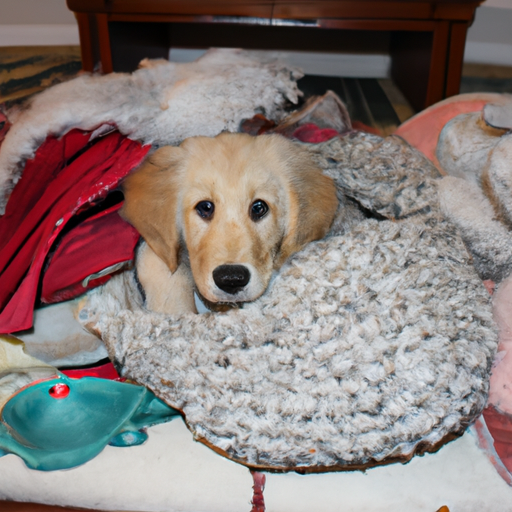Understanding the fascinating world of canine behavior is an essential part of being a responsible dog parent. One such behavior that often piques interest is the nesting behavior.
Understanding Nesting Behavior in Dogs
Nesting behavior in dogs is not uncommon. You might see your dog pawing at their bed, turning in circles, or even dragging their favourite blanket around the house. This behavior, often seen in pregnant dogs, is a primal instinct that can be observed in both male and female dogs.
While nesting is generally harmless, it’s important to understand what triggers this behavior and when it might be a cause for concern.
Reasons Behind Nesting Behavior
There are several reasons why dogs exhibit nesting behavior:
- Comfort and Warmth: Dogs often nest to make their sleeping area more comfortable. By pawing or scratching, they’re able to fluff up their bedding and create a warm, cozy space to rest.
- Security and Privacy: Dogs may also nest as a way to mark their territory and create a safe, private space where they can retreat when they’re feeling anxious or stressed.
- Maternal Instincts: Pregnant dogs often exhibit nesting behavior as they prepare for the arrival of their puppies. However, this behavior is not exclusive to pregnant dogs and can be observed in male dogs and non-pregnant females as well.
When is Nesting Behavior a Cause for Concern?
While nesting is usually a normal and harmless behavior, there are times when it can be a sign of stress or health issues. If your dog’s nesting behavior becomes obsessive or is accompanied by other changes in behavior or physical symptoms, it’s important to consult with your vet.
Possible causes for concern could include:
- Increased nesting behavior with no apparent reason
- Changes in appetite or sleeping patterns
- Unusual aggression when approached while nesting
- Physical symptoms such as vomiting, diarrhea, or lethargy
How to Respond to Nesting Behavior
It’s important to approach your dog’s nesting behavior with understanding and patience. Here are a few tips:
- Provide a comfortable, safe space for your dog to nest. This might be a cozy dog bed or a designated area with their favorite blanket.
- If your dog is pregnant and nesting, make sure she has a quiet, private space to prepare for her puppies.
- If your dog’s nesting behavior becomes a concern, consult with your vet to rule out any potential health issues.
| Behavior | Response |
|---|---|
| Increased Nesting | Consult a vet |
| Normal Nesting | Provide comfortable space |
| Nesting during Pregnancy | Provide private, quiet space |
FAQ Section
Q: Is nesting behavior only seen in pregnant dogs?
A: No, nesting behavior can be seen in both male and female dogs, regardless of whether they’re pregnant.
Q: Should I be concerned if my dog is nesting?
A: Generally, nesting is a normal behavior. However, if it becomes obsessive or is accompanied by other concerning symptoms, it’s best to consult with your vet.
Q: How can I support my dog’s nesting behavior?
A: Provide your dog with a comfortable, safe space to nest. If your dog is pregnant, ensure she has a quiet, private space to prepare for her puppies.
Q: Can nesting behavior be a sign of illness?
A: While it’s usually a normal behavior, excessive nesting can sometimes be a sign of stress or underlying health issues. If you’re concerned, it’s always best to consult with your vet.
In conclusion, understanding and responding appropriately to your dog’s nesting behavior can help strengthen the bond between you and your furry friend, and ensure their comfort and well-being.



